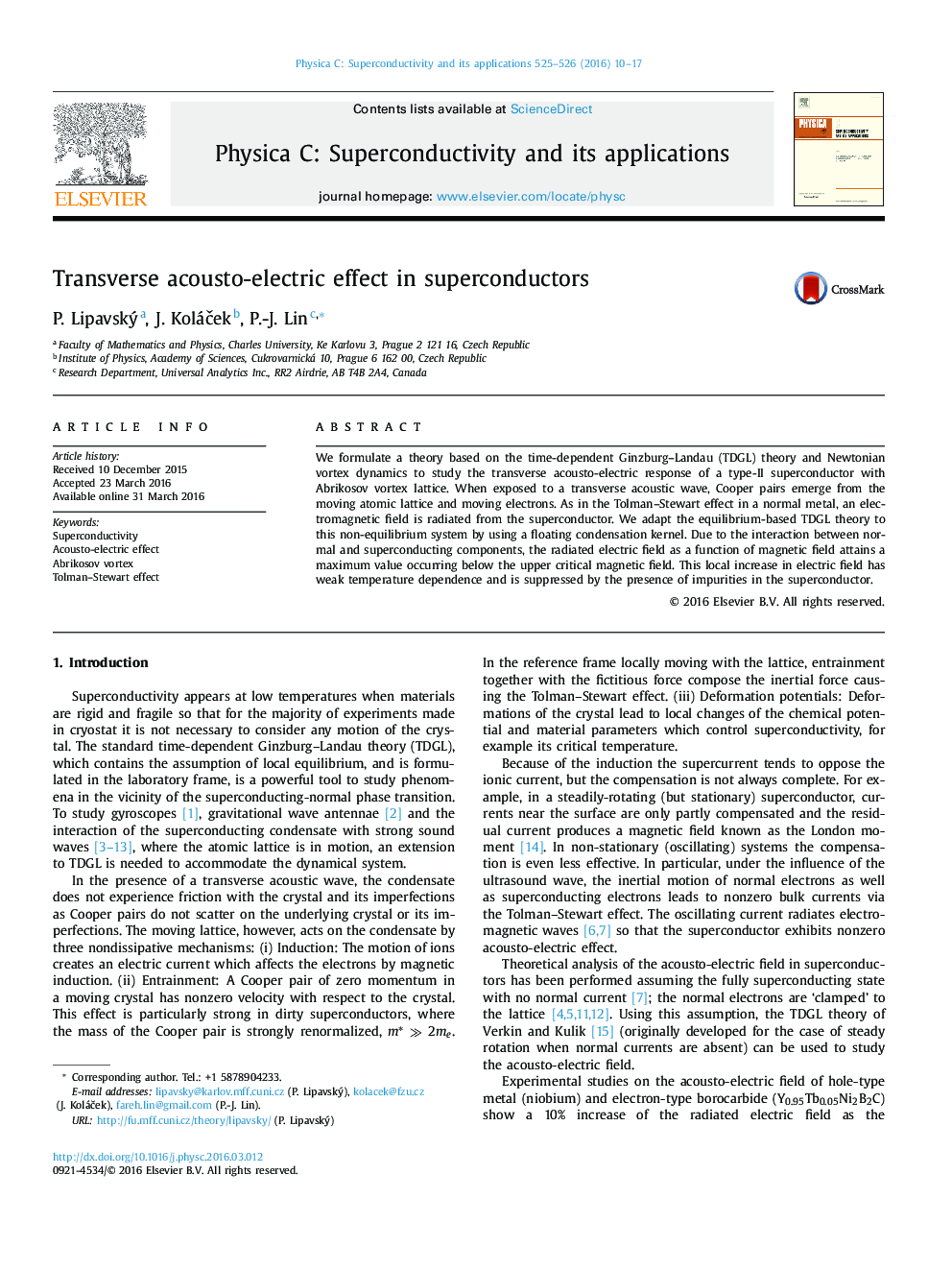| Article ID | Journal | Published Year | Pages | File Type |
|---|---|---|---|---|
| 1817330 | Physica C: Superconductivity and its Applications | 2016 | 8 Pages |
•A description of an acousto-electric effect of superconductors is formulated, continuous over the phase transition.•Interactions among a sound wave, normal and superconducting electrons are included.•Response radiation attains a maximum before transition to the normal state.•Effects should be observable in clean niobium.
We formulate a theory based on the time-dependent Ginzburg–Landau (TDGL) theory and Newtonian vortex dynamics to study the transverse acousto-electric response of a type-II superconductor with Abrikosov vortex lattice. When exposed to a transverse acoustic wave, Cooper pairs emerge from the moving atomic lattice and moving electrons. As in the Tolman–Stewart effect in a normal metal, an electromagnetic field is radiated from the superconductor. We adapt the equilibrium-based TDGL theory to this non-equilibrium system by using a floating condensation kernel. Due to the interaction between normal and superconducting components, the radiated electric field as a function of magnetic field attains a maximum value occurring below the upper critical magnetic field. This local increase in electric field has weak temperature dependence and is suppressed by the presence of impurities in the superconductor.
